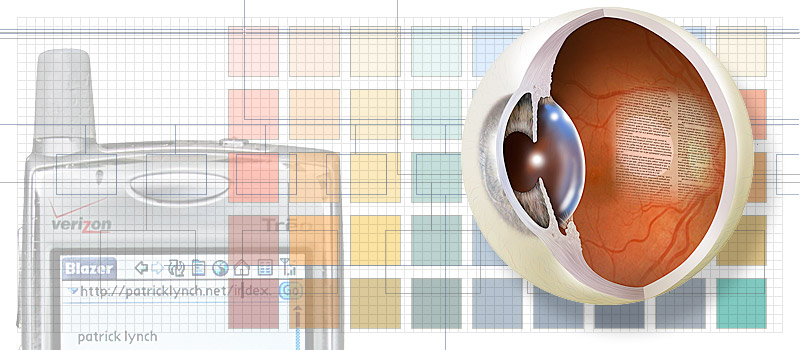- book contents
- chapter contents
- previous page
- next page
7 Page Design
Simplicity is not the goal. It is the by-product of a good idea and modest expectations.
—Paul Rand
We seek clarity, order, and trustworthiness in information sources, whether traditional paper documents or web pages. Effective page design can provide this confidence. The spatial organization of graphics and text on the web page can engage users with graphic impact, direct their attention, prioritize the information they see, and make their interactions with your web site more enjoyable and efficient.
Design creates visual logic and seeks an optimal balance between visual sensation and graphic information. Without the visual impact of shape, color, and contrast, pages are graphically uninteresting and will not motivate the viewer. Dense text documents without contrast and visual relief are also hard to read, particularly on low-resolution screens. But without the depth and complexity of text, highly graphic pages risk disappointing the user by offering a poor balance of visual sensation, text information, and interaction. In seeking the ideal balance, the primary constraints for page design are the limitations of the web medium, the diversity of individuals and technologies accessing web pages, and access speeds ranging from slow modems to high-speed wired and wireless connections.
Visual and functional continuity in your web site organization, graphic design, and typography are essential to convince your audience that your web site offers them timely, accurate, and useful information. A careful, systematic approach to page design can simplify navigation, reduce user errors, and make it easier for users to take advantage of the information and features of the site. But given the wide and diverse range of contexts that make up the experience of the web, the starting point for web page design begins under the surface of the page, with the structure of the underlying code.

- book contents
- chapter contents
- previous page
- next page









